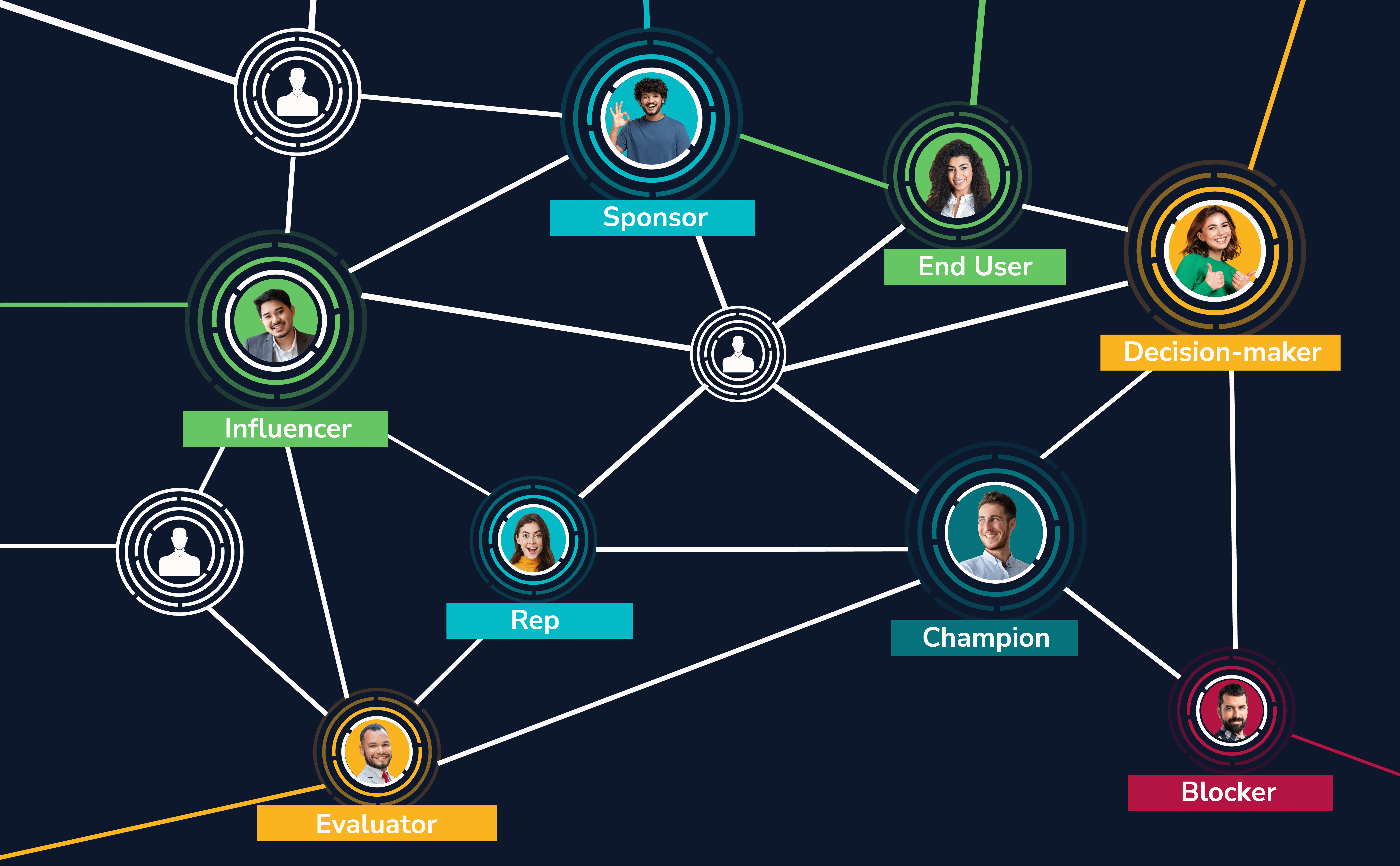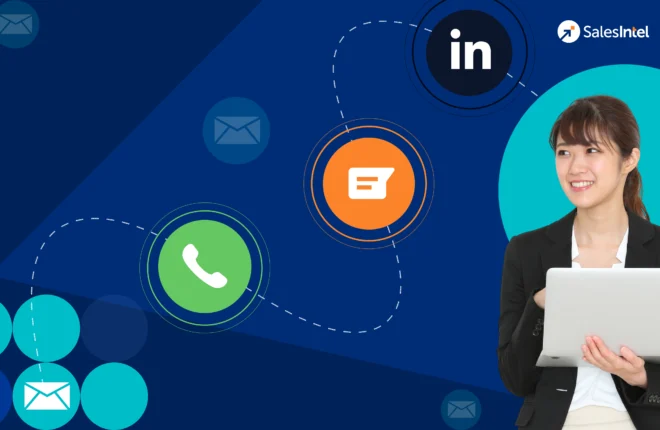According to research from “The Challenger Customer,” the standard B2B deal typically involves approximately 6.8 stakeholders from the purchasing side. This number tends to increase even more for companies specializing in expensive, higher-end products. How can you sell effectively when you need to engage with numerous individuals across various departments within an organization? This is where the concept of sales multithreading becomes crucial.
Multithreading has emerged as a powerful strategy for navigating complex organizational decision-making processes. By engaging with multiple stakeholders simultaneously, sales professionals can increase their chances of success and foster long-term customer relationships.
What Is Meant by Multithreading in Sales?
Multithreaded sales refer to deals where your team has established connections with multiple stakeholders within the target company you aim to sell products or services. Sales multithreading stands in contrast to single-threaded sales, which involve a direct relationship between the buyer and seller.
In single-threaded sales represent the conventional approach to selling products or services. the focus lies on identifying the primary decision-maker within a company, fostering a relationship with them, and presenting them with an irresistible offer.
In sales multithreading, sales teams endeavor to reach an agreement among all relevant stakeholders within a business that their product or service is the optimal choice for the organization.
What Are the Benefits of Sales Multithreading?
With its simplicity of connecting with just one person in the target organization, single-threaded sales may seem appealing due to its ease of lead generation. However, the market is changing, and single-threaded deals are becoming increasingly rare. This shift has led to the rise of sales multithreading, which offers numerous advantages:
Faster sales cycles:
By engaging multiple stakeholders simultaneously, sales multithreading can expedite decision-making, leading to shorter sales cycles and quicker deal closures.
More closed deals:
With the involvement of multiple decision-makers and influencers, sales multithreading increases the likelihood of securing buy-in from various stakeholders, resulting in a higher number of closed deals.
Deeper prospect insights:
Interacting with multiple stakeholders gives a more comprehensive understanding of the prospect’s needs, pain points, and objectives. This deeper insight enables sales professionals to tailor their approach more effectively and provide targeted solutions.
Enhanced relationship building:
Multithreading sales enable sales professionals to build relationships with a broader network of stakeholders, fostering trust and rapport that can lead to long-term partnerships.
Risk mitigation:
By spreading the engagement across multiple stakeholders, sales multithreading reduces the risk of relying solely on one contact. This diversification of relationships minimizes the impact of potential changes or departures within the organization.
While single-threaded sales offer simplicity, the shifting landscape and increasing complexity of B2B transactions make sales multithreading a more advantageous approach. From faster sales cycles to deeper prospect insights, embracing multithreading can lead to improved outcomes and greater success in today’s competitive market.
Multithreading Sales in 5 steps
Qualify on the First Call:
Qualifying leads effectively during the initial contact is crucial in multithreading sales. This process involves identifying key decision-makers and influencers within the organization. Understanding their pain points and objectives is essential to tailor your approach accordingly.
To achieve this, ask targeted questions to uncover vital information about the prospect’s needs and challenges. Active listening plays a pivotal role in this stage, enabling you to grasp the nuances of the prospect’s situation.
Leveraging B2B data enhances the identification of key decision-makers. Platforms like SalesIntel provide access to comprehensive databases containing insights into organizational structures, job roles, and contact information. This lets you pinpoint individuals with authority and influence to drive purchasing decisions.
Reach Millions of Decision-Makers Using Human-Verified Data
Remember, qualifying leads on the first call involves meticulously identifying decision-makers, understanding their pain points, and leveraging B2B data for enhanced prospecting. Adopting a strategic approach and utilizing the right tools lay a solid foundation for successful multithreading sales engagements.
Cultivate an Internal Champion:
Cultivating an Internal Champion is a fundamental component of successful sales strategies. These champions are individuals within the prospect’s organization with significant influence and authority. They are pivotal in advocating for your solution and guiding the decision-making process.

Building relationships with internal champions requires a dedicated investment of time and effort. It involves nurturing these connections by providing value and demonstrating a thorough understanding of their needs and objectives. Aligning your solution with their goals is crucial to securing their support throughout the sales cycle.
Cultivating an internal champion entails identifying key individuals, fostering relationships, and ensuring your solution resonates with their priorities. Doing so will enhance your chances of navigating complex sales processes within the organization effectively.
Understand Who’s Involved:

image by – marketoonist.com
In complex B2B sales, decisions typically involve multiple stakeholders rather than a single individual. This complexity underscores the importance of identifying all parties involved in the buying process. Understanding these stakeholders’ roles, responsibilities, and motivations is crucial for navigating the sales process effectively.
To achieve this, sales professionals must meticulously map out the organizational structure of the prospect’s company. By doing so, they can gain insight into the relationships between stakeholders and their respective levels of influence. This comprehensive understanding enables sales professionals to tailor their approach to address the specific needs and concerns of each decision-maker.
Create Mutual Expectations:
Clear communication and alignment of expectations are vital components of successful multithreading sales.
Transparency is key. Sales professionals can build trust with stakeholders by openly discussing timelines, deliverables, and responsibilities. This transparency fosters a collaborative atmosphere and demonstrates the sales professional’s commitment to the success of the partnership. It also ensures everyone is on the same page and helps prevent misunderstandings that could derail the sales process.
Setting realistic expectations is another critical aspect of multithreading sales. Sales professionals should avoid overpromising and underdelivering, as this can erode trust and damage relationships. Instead, they should set achievable goals and consistently deliver on their promises. This reliability builds credibility and strengthens the bond between the sales professional and the stakeholders.
Consistently delivering on promises is essential for driving customer satisfaction in multithreading sales. Sales professionals can consistently foster positive relationships with stakeholders by meeting or exceeding expectations consistently. This, in turn, leads to increased trust, repeat business, and referrals, ultimately driving long-term success.
Clear communication, transparency, setting realistic expectations, and consistent delivery are essential for successful multithreading sales. By focusing on these key principles, sales professionals can build strong relationships with stakeholders and drive customer satisfaction.
Align Multiple Viewpoints:
Incorporating diverse perspectives is crucial for overcoming internal resistance and fostering consensus within an organization. This involves acknowledging that different stakeholders may have varying priorities, concerns, and viewpoints.
To effectively incorporate diverse perspectives, sales professionals must take the time to understand each stakeholder’s unique priorities and concerns. This requires active listening and empathy to grasp their individual needs and motivations.
Tailoring messaging accordingly is essential to resonate with diverse stakeholders. By highlighting the benefits of your solution from different angles, sales professionals can appeal to each stakeholder’s varied interests. This demonstrates an understanding of their concerns and how your solution addresses their needs.
Addressing potential objections preemptively is another key strategy in incorporating diverse perspectives. By anticipating and proactively addressing concerns before they arise, sales professionals can build trust and credibility with stakeholders. This proactive approach helps alleviate doubts and facilitates consensus-building within the organization.
Incorporating diverse perspectives involves understanding the priorities and concerns of each stakeholder, tailoring messaging accordingly, and addressing potential objections preemptively. By embracing diverse viewpoints, sales professionals can overcome internal resistance and drive consensus, ultimately accelerating the decision-making process within the organization.
Simplify Multithreading Sales With B2B Data
The importance of leveraging B2B data within multithreading approaches cannot be overstated. Sales professionals rely on accurate and comprehensive data to identify key decision-makers, understand market trends, and tailor their approach to individual prospects. With platforms like SalesIntel offering access to extensive databases, sales teams can access up-to-date information to make informed decisions and drive successful outcomes.
The accuracy and completeness of B2B data are paramount in today’s competitive environment. Sales professionals must trust that the data they utilize is reliable and relevant to their target audience. By harnessing the power of B2B data, sales teams can gain a competitive edge, streamline their processes, and ultimately achieve greater success in their multithreading sales endeavors.




